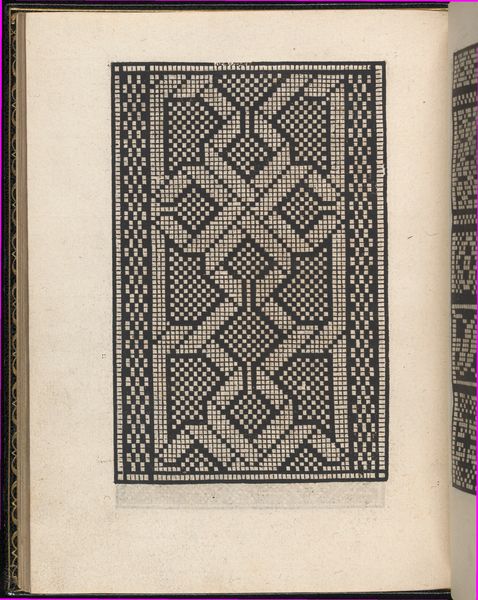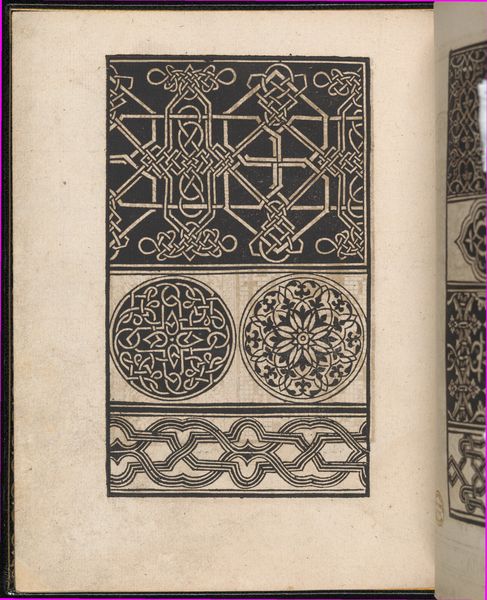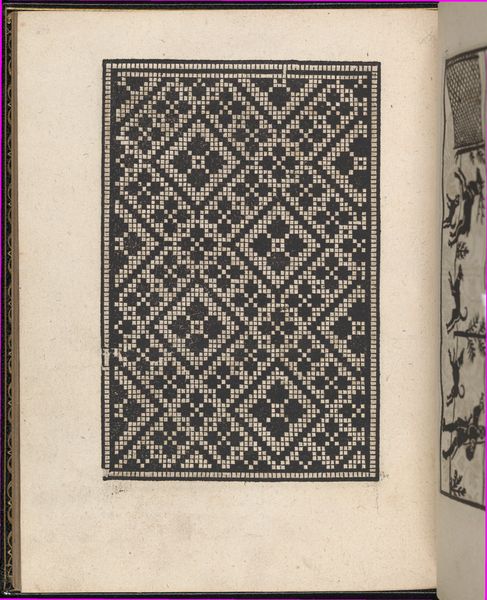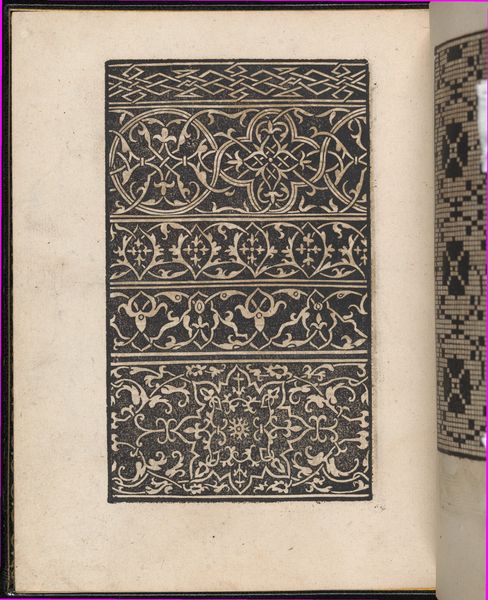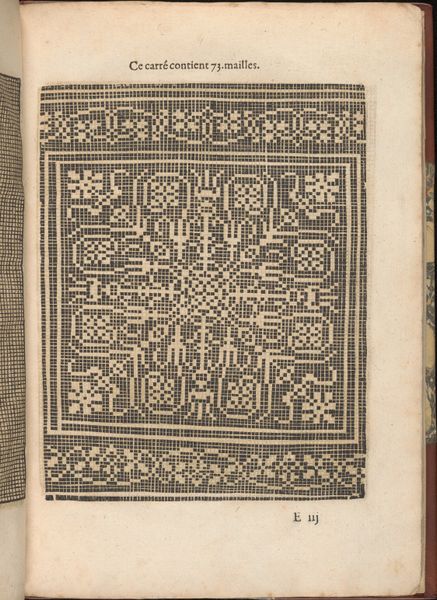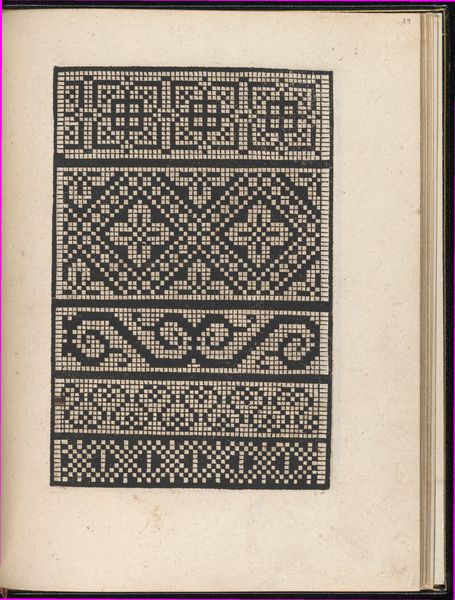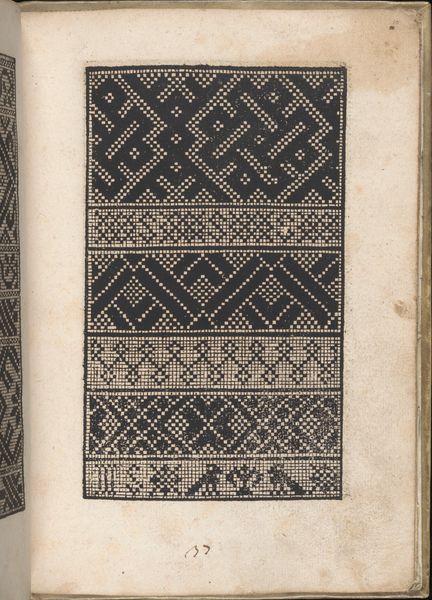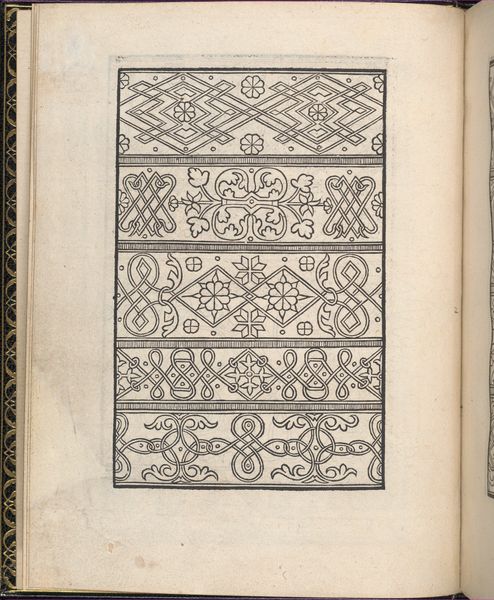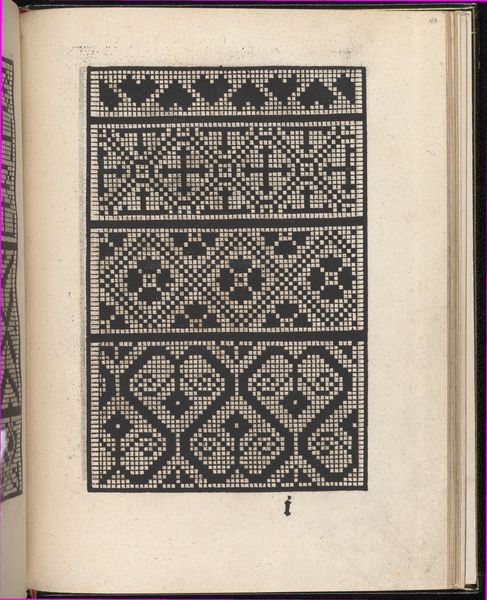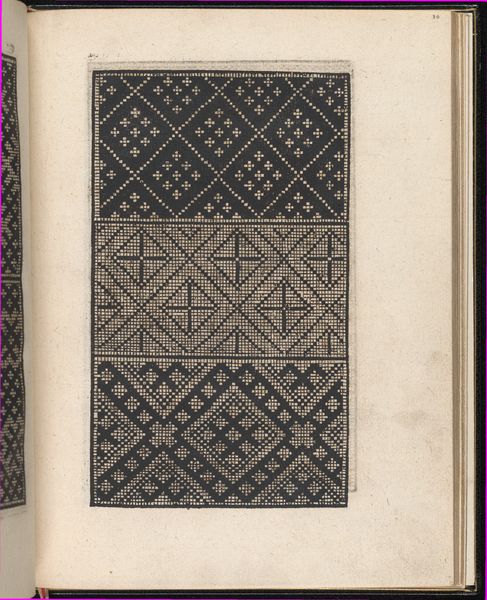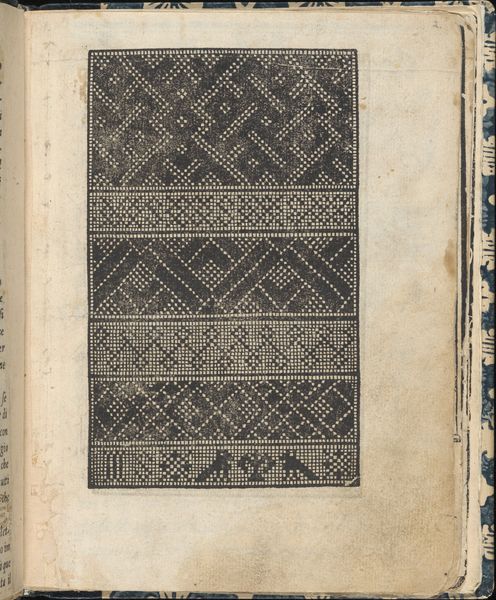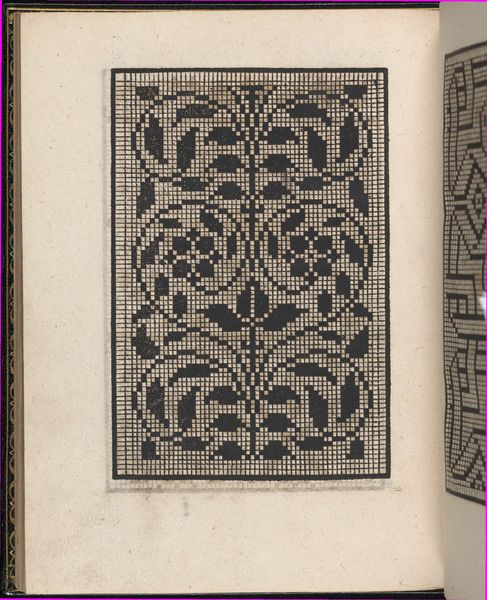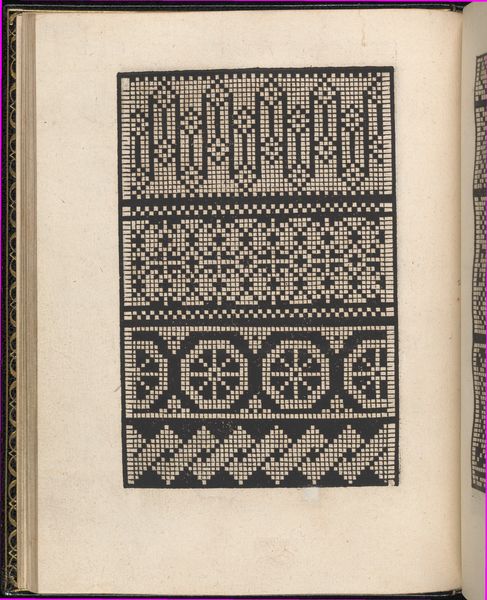
Page from Ein new kunstlich Modelbuch...(Page 10v) 1544
0:00
0:00
drawing, graphic-art, ornament, print, woodcut
#
drawing
#
graphic-art
#
ornament
# print
#
geometric
#
woodcut
#
northern-renaissance
#
decorative-art
Dimensions: Overall: 7 11/16 x 5 7/8 in. (19.5 x 15 cm)
Copyright: Public Domain
Editor: This is a page from "Ein new kunstlich Modelbuch..." dated 1544, by Peter Quentel. It's a woodcut print, and I'm immediately struck by its intricate geometric patterns. How do you read this page? Curator: Well, looking at the materials and process, this woodcut is less about individual artistry and more about the reproduction of patterns. These "model books" served a crucial function. What do you think that might be? Editor: Were they a sort of instruction manual? Curator: Precisely. Consider the rise of the merchant class during the Renaissance. There's a new demand for textiles, embroidery, and other decorative arts. This book, then, functions as a template, a means of mass-producing desirable goods. It collapses the boundary between 'high art' and practical craft. Think of the labor involved! Editor: I hadn't considered that. So the geometric patterns aren't just aesthetically pleasing, but also instructions? Curator: Absolutely! They democratize design. A craftsman who might not have the skill to create original designs could simply copy these patterns, fulfilling consumer demand. Consider also the rise of printing at the time – how do you think that helped push such production forward? Editor: I guess the book itself is a product, aimed at other producers of consumer goods. It highlights how printing became a vital instrument in shaping taste and driving consumption. Curator: Exactly. This isn't just a pretty picture; it's a cog in the machinery of early capitalist production and consumption. Editor: That shifts my perspective entirely. Seeing it as part of a bigger system changes how I understand the artist’s intention, or perhaps the artisan’s. Curator: And that system shaped the artist, of course, reflecting cultural and economic demands in the materials and the finished product itself.
Comments
No comments
Be the first to comment and join the conversation on the ultimate creative platform.
